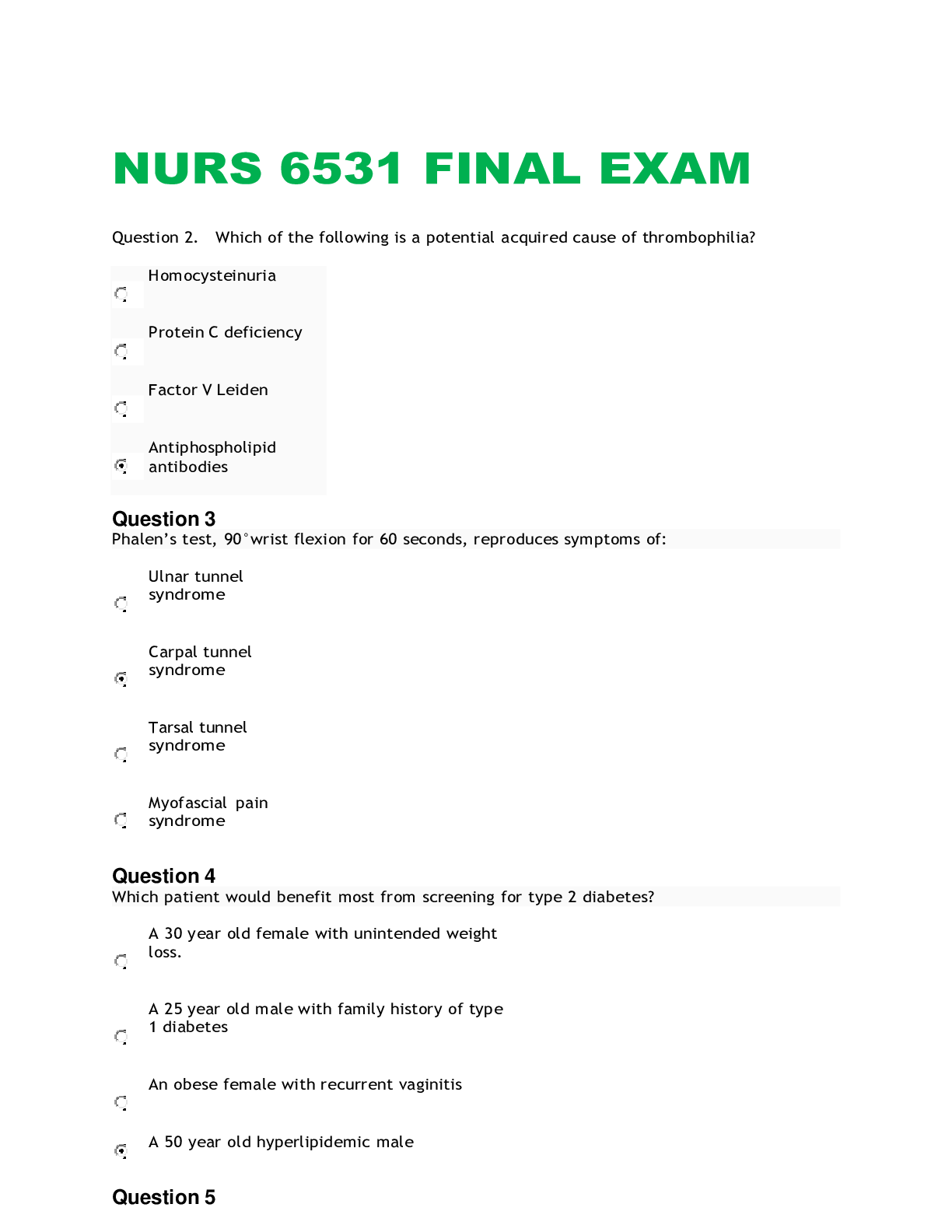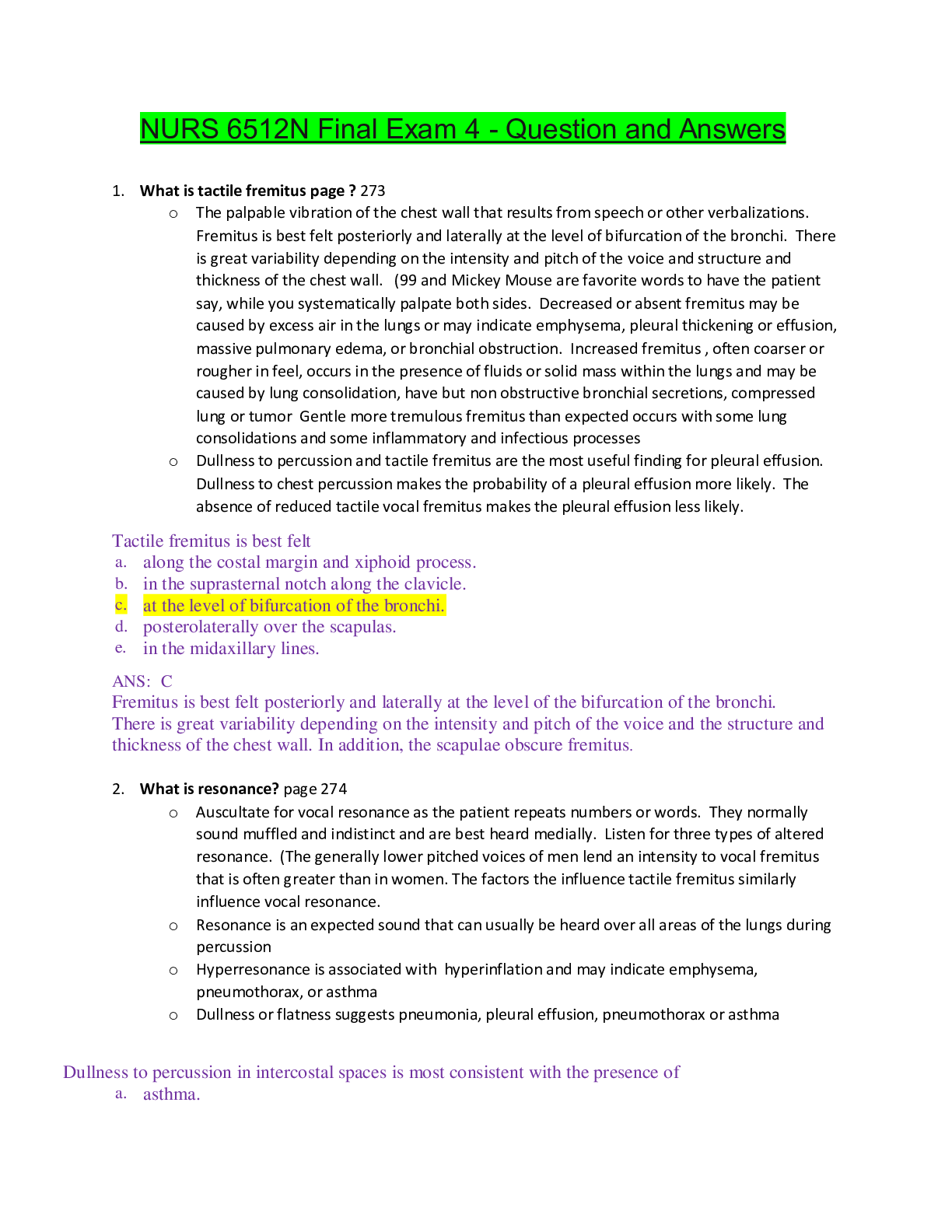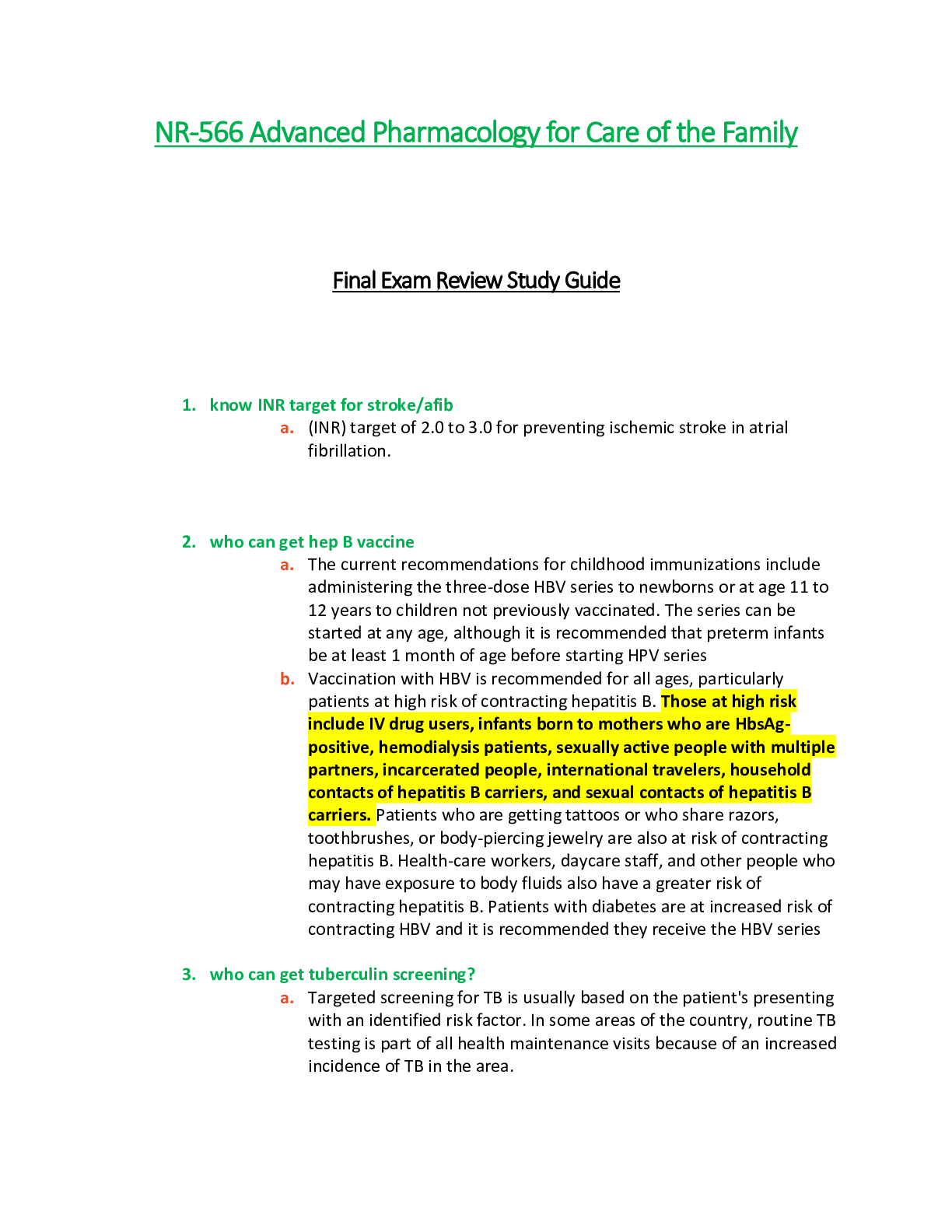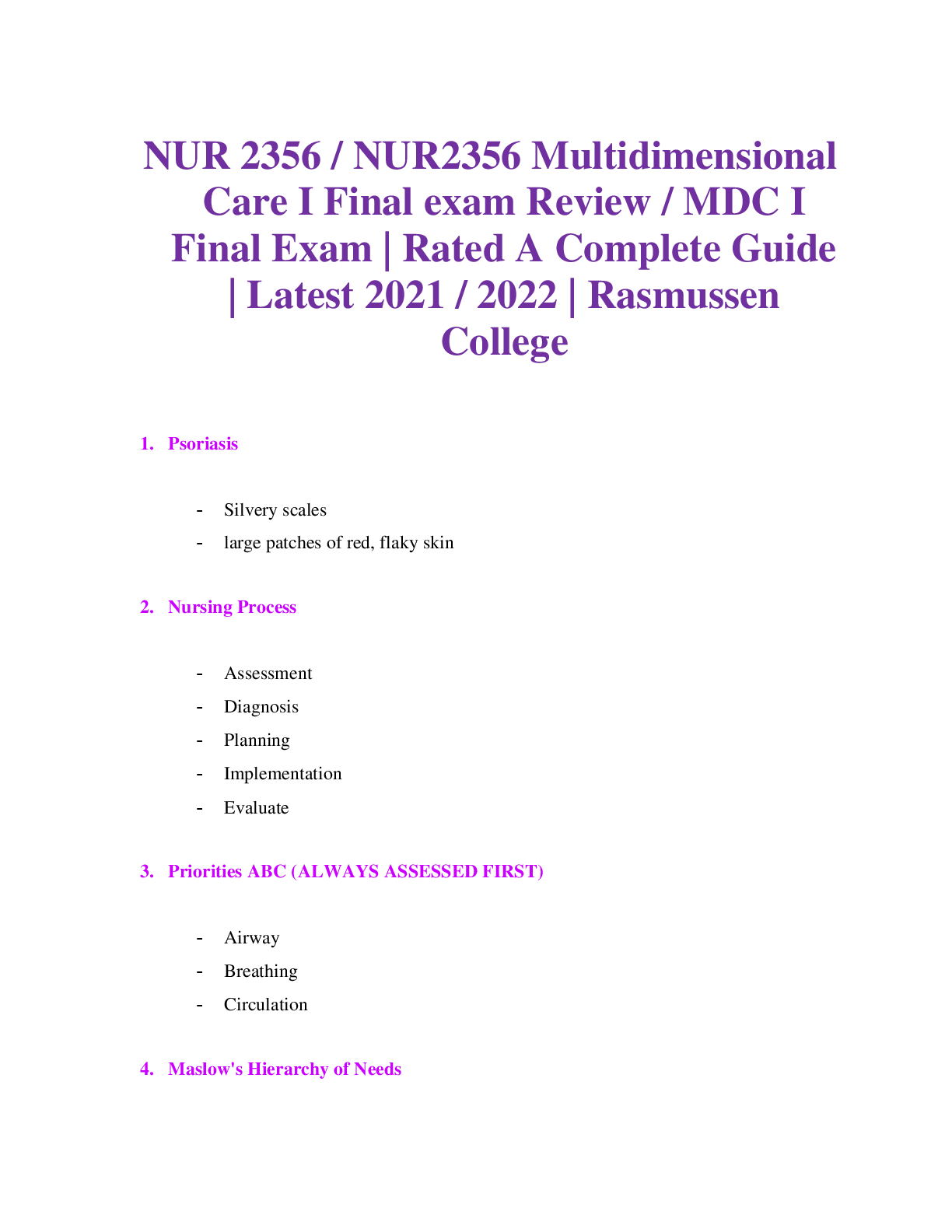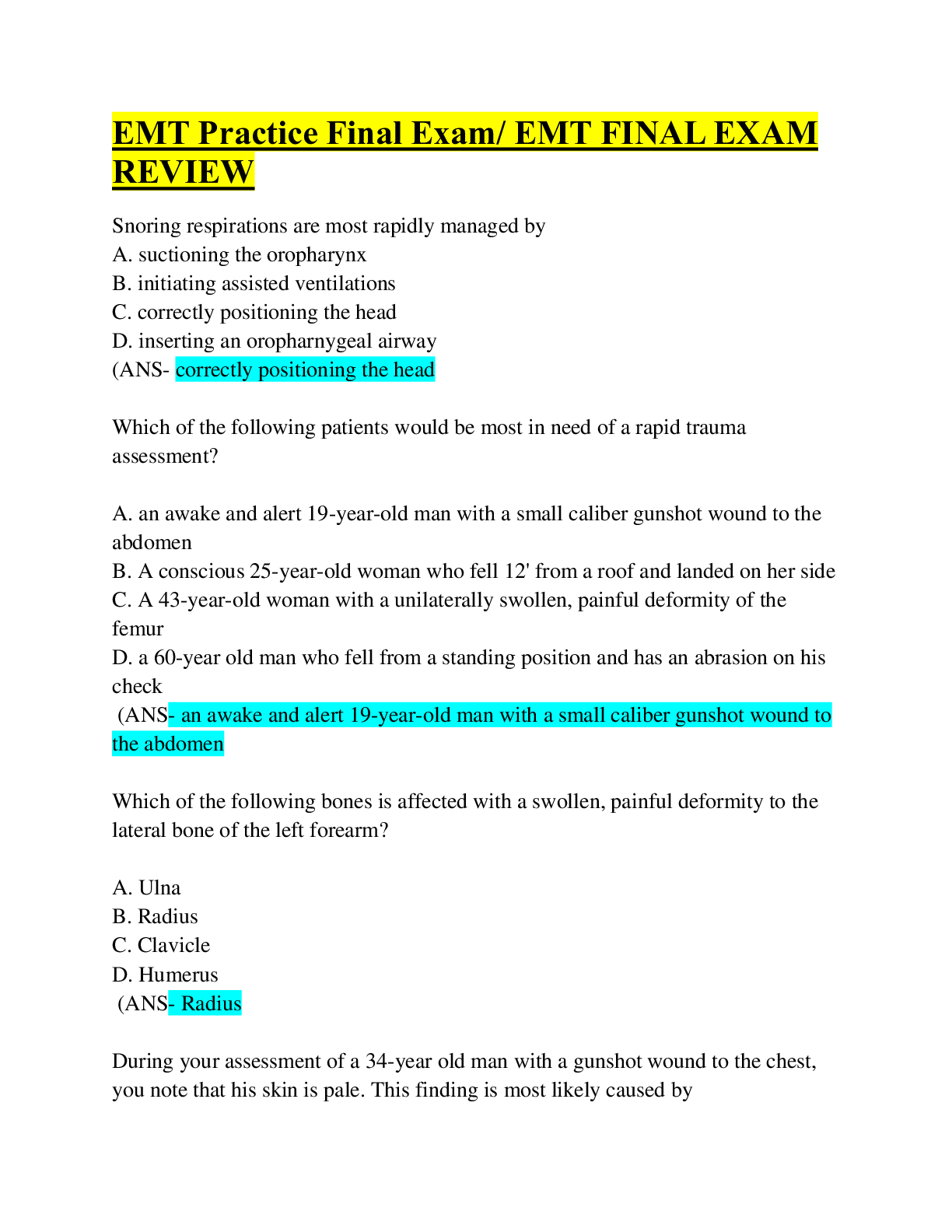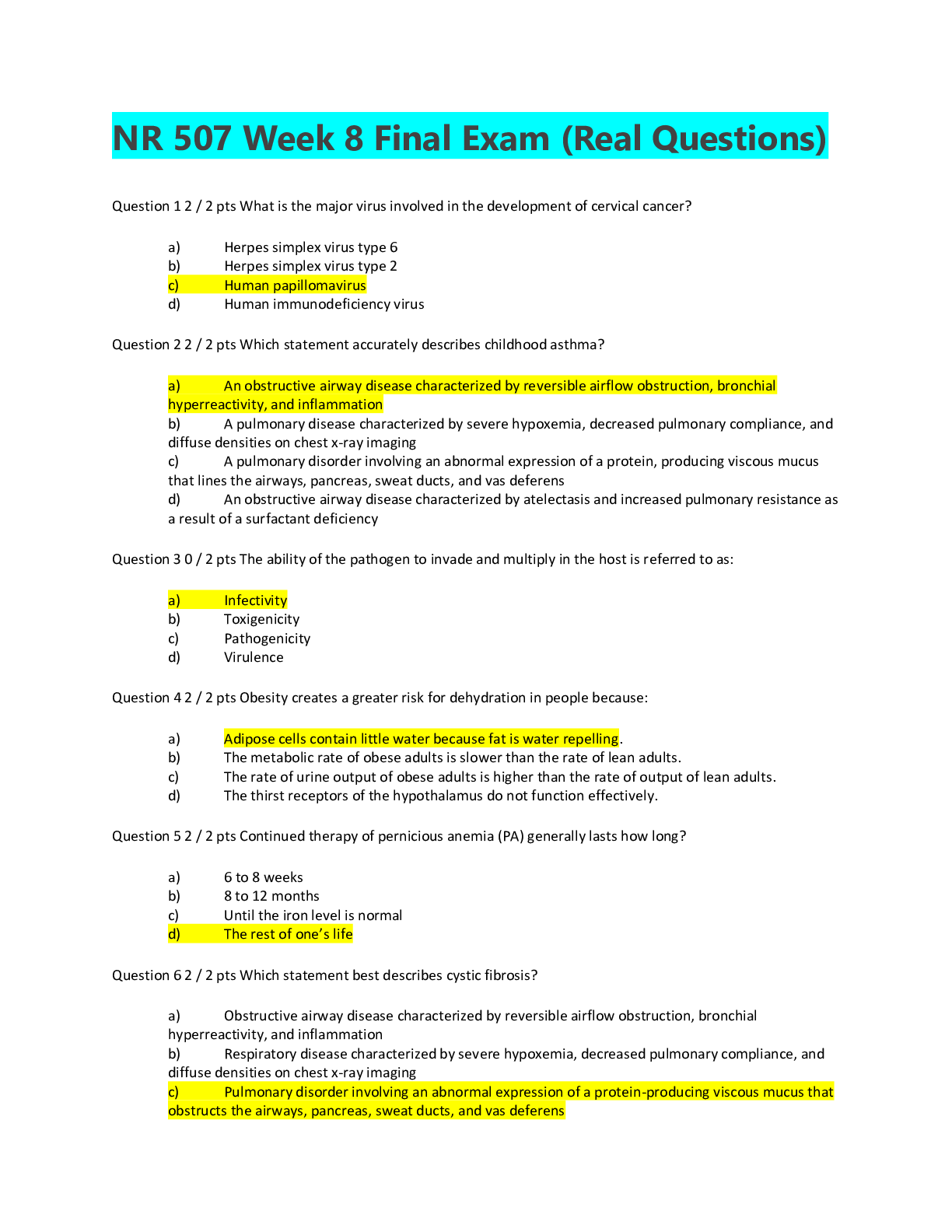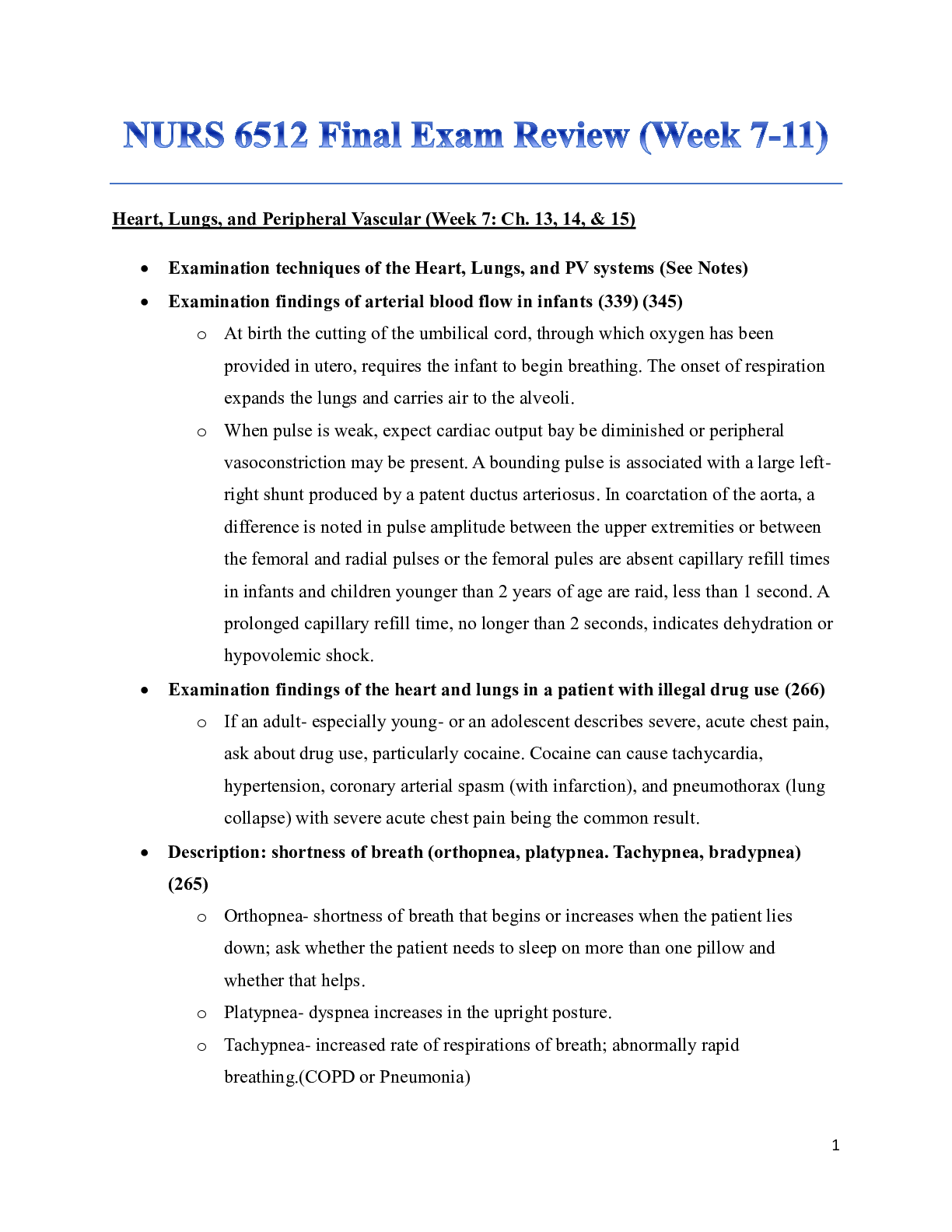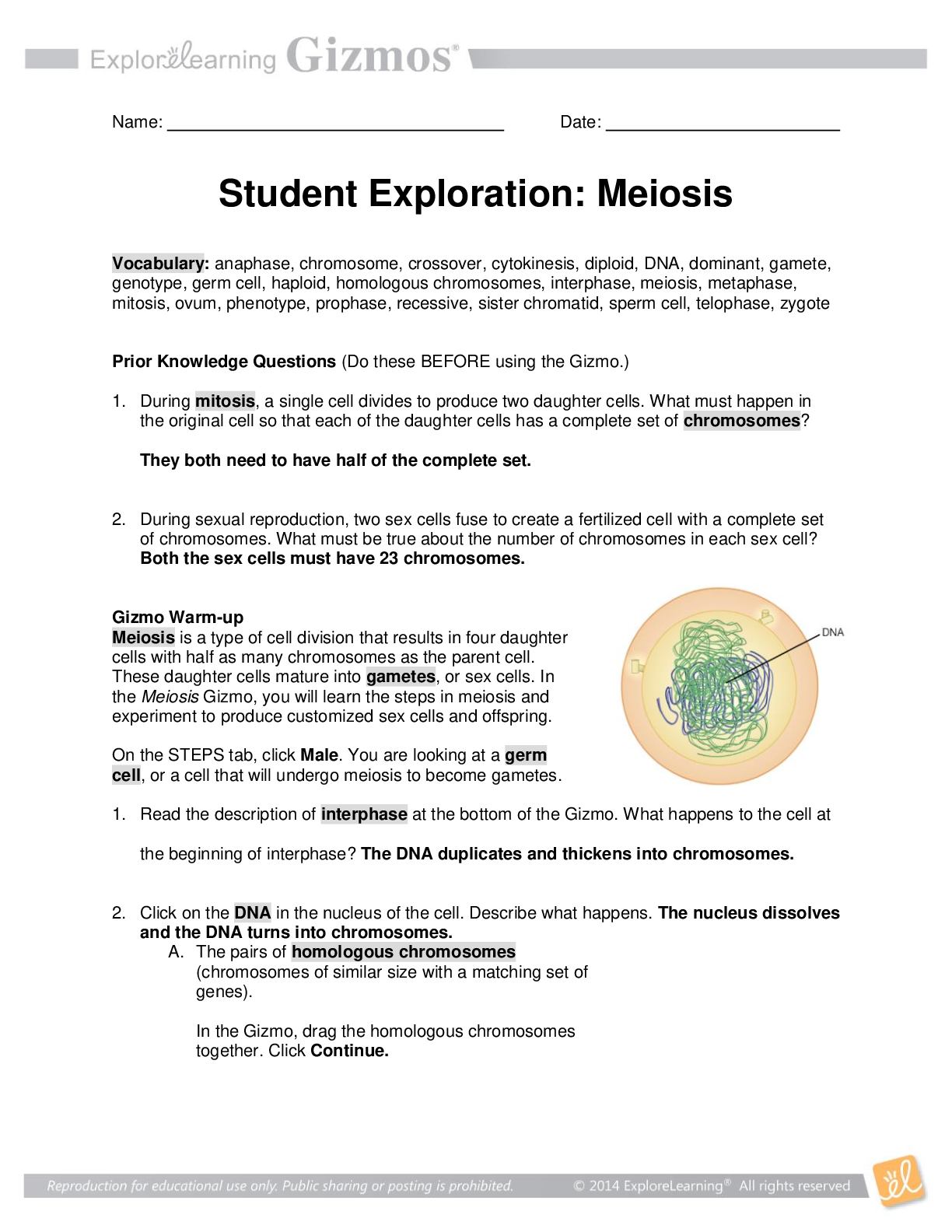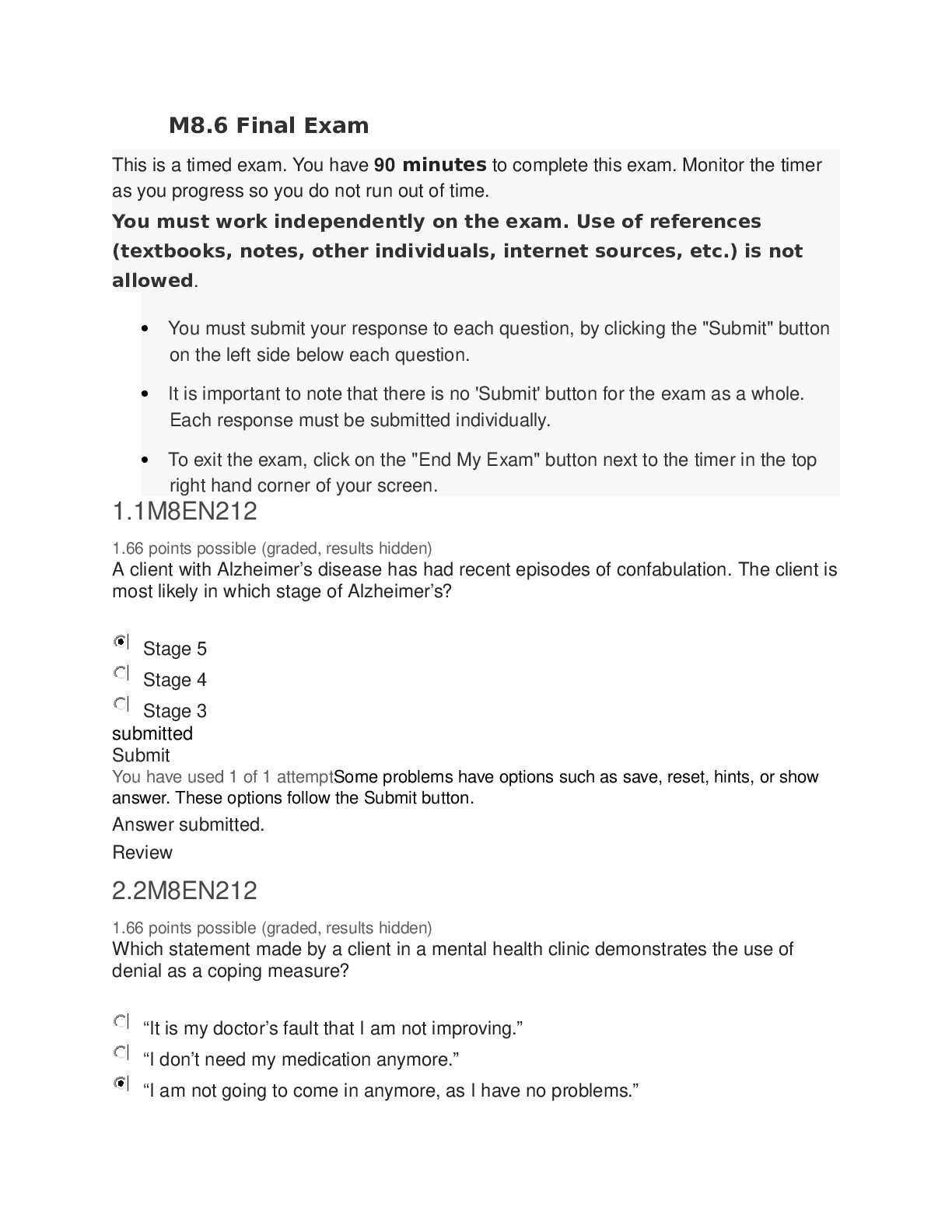*NURSING > Final Exam Review > Chamberlain College of NursingNR 293FINAL EXAM REVIEW TEST TWO (All)
Chamberlain College of NursingNR 293FINAL EXAM REVIEW TEST TWO
Document Content and Description Below
Addiction vs. opioid tolerance o Addiction is a chronic, nerobiologic disease whose development is influenced by generic psychosocial, and environmental factors. o Opioid tolerance is a normal ... physiologic condition that results from long term opioid use, large doses of opioids are required to maintain the same level of analgesia and in which abrupt discontinuation of the drug results in withdrawal symptoms. Types of pain, breakthrough pain, management of chronic pain o Acute Pain is sudden in onset, usually subsides when treated and typically occurs over less than a 6-week period. o Breakthrough Pain is when it occurs between doses of pain medication. o Cancer pain results from any of a variety of causes related to cancer and/or metastasis of cancer. o Central pain results from any disorder that causes central nervous system damage. o Chronic pain is persistent or reoccurring pain that is often difficult to treat. Includes any pain lasting longer than 3 to 6 months, pain lasting longer than a month after healing of an acute injury, or pain that accompanies a nonhealing tissue injury. Management of chronic pain include specific treatment, simultaneous psychological treatment, and physical therapy. o Deep pain occurs in tissues below the skin levels, opposite of superficial pain. o Neuropathic pain results from a disturbance of function or pathologic change in a nerve. o Phantom pain is experienced in an area of the body that has been surgically or traumatically removed. o Referred pain occurs in an area away from the organ or origin. o Somatic pain originates from skeletal muscles, ligaments, or joints. o Superficial pain originates from the skin or mucous membranes, opposite of deep pain. o Vascular pain that results from pathology of the vascular or perivascular tissues. o Visceral pain originates from organs or smooth muscles. Synergistic effects o Drug interactions in which the effect of a combination of two or more drugs with similar actions is greater than the sum of the individual effects of the same drugs given alone. Effects of chewing or crushing extended-release opioid drugs o Chewing or crushing opioid drugs can cause rapid release and absorption which can be fatal. Adverse effects/contraindications, overdose management o morphine sulfate Adverse effects: Coma Seizures Bradycardia Pulmonary edema Respiratory arrest Bronchospasms Cardiac arrest Contraindications: Hypersensitivity Alcoholism Depression Substance abuse Asthma COPD [Show More]
Last updated: 1 year ago
Preview 1 out of 33 pages
.png)
Reviews( 0 )
Document information
Connected school, study & course
About the document
Uploaded On
May 16, 2021
Number of pages
33
Written in
Additional information
This document has been written for:
Uploaded
May 16, 2021
Downloads
0
Views
27

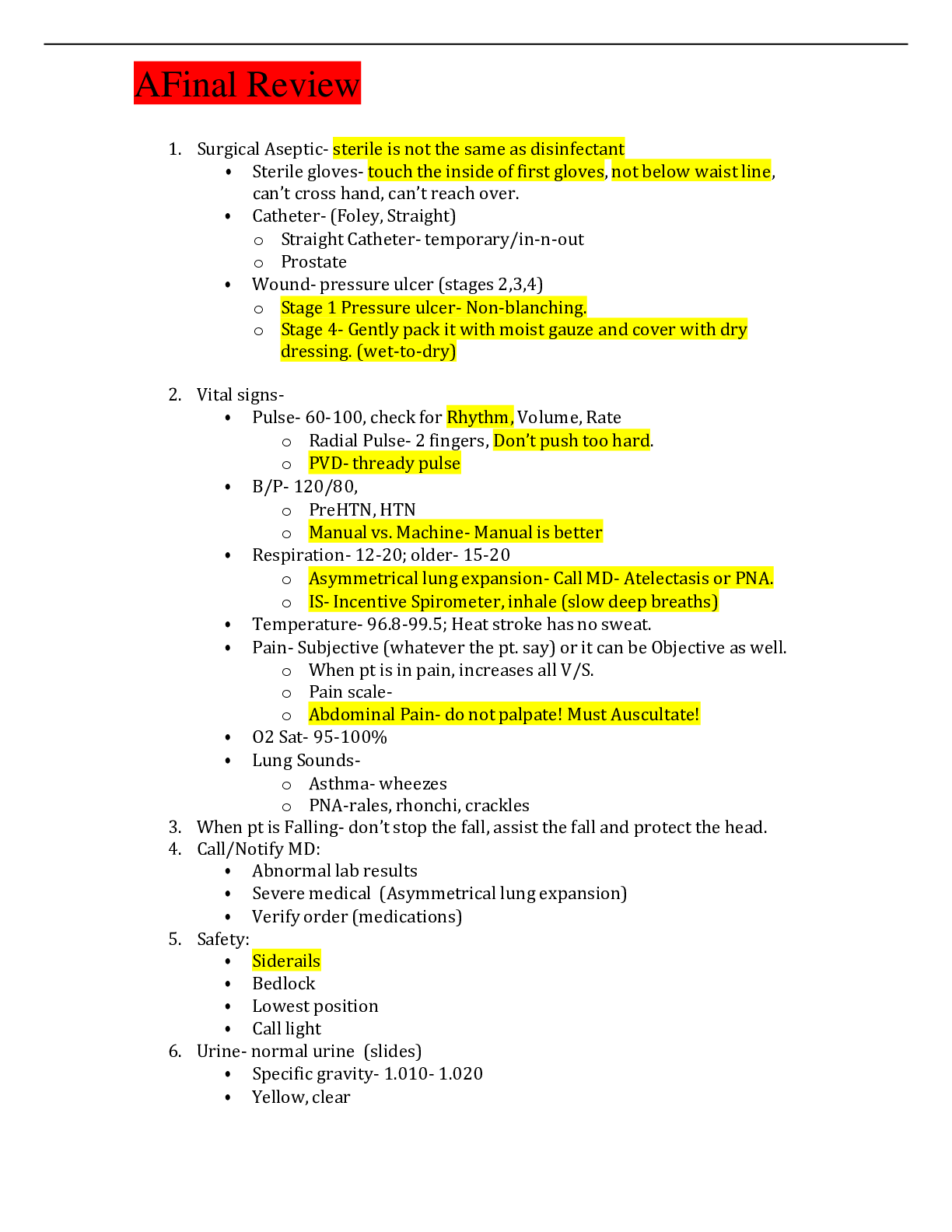


.png)
